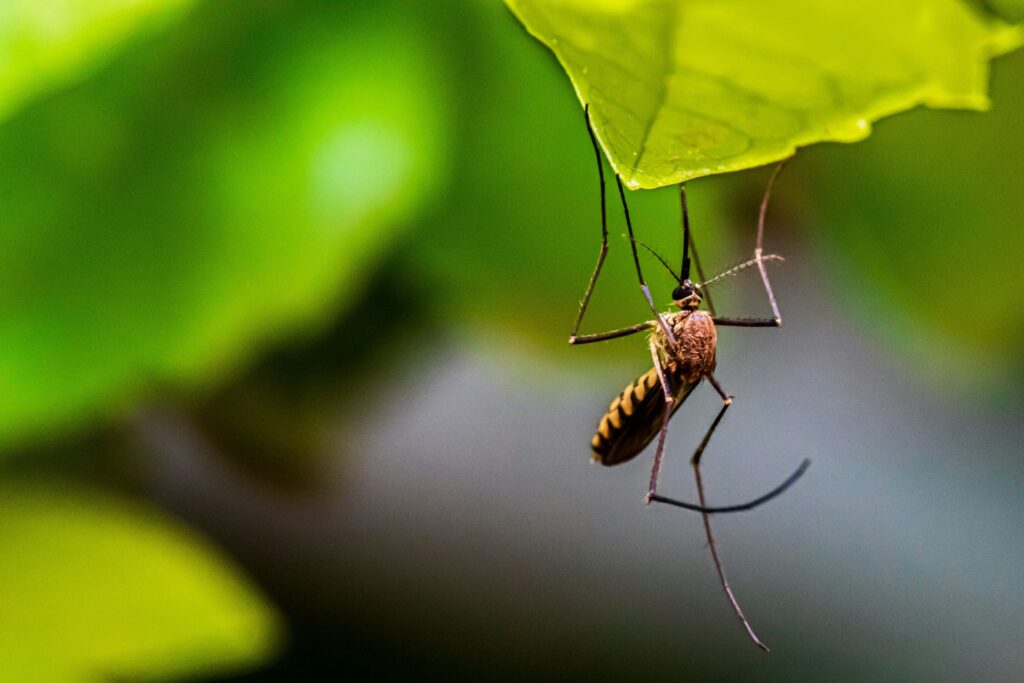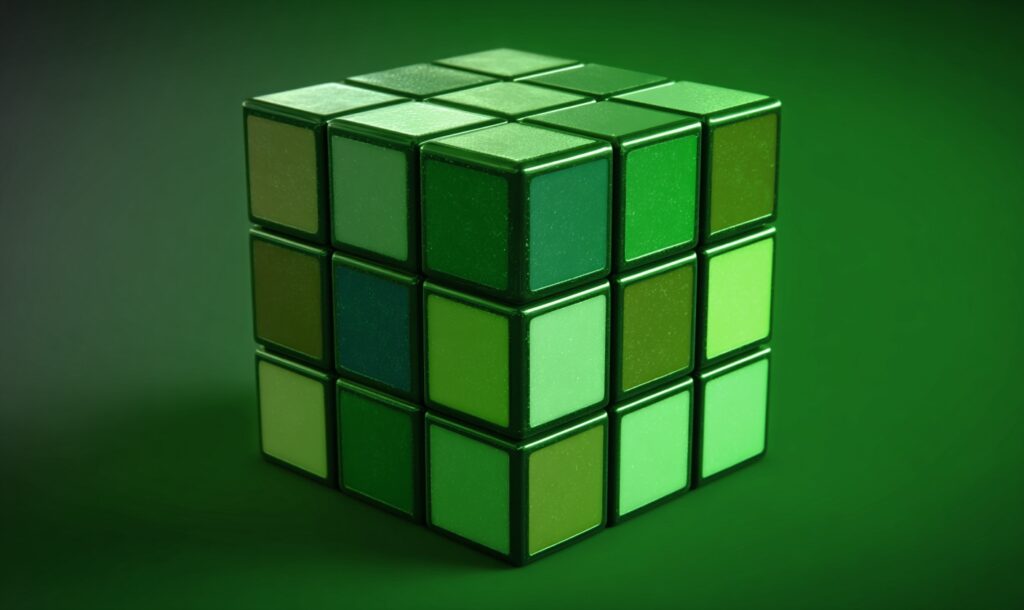We all learn the same things in science as we make our way through school. We discover that mixing baking soda and vinegar creates a volcano, how to make carnations change color and that the mitochondria is the powerhouse of the cell. While these are all important things to know, we’re not going to talk about them here.
Instead, we will explore all the dark and dangerous corners of science that your high school teacher didn’t want or wasn’t allowed to teach you about.
There are plenty of weird science facts worth knowing about. Here are 47 of our favorites.
1. Human bodies glow — we just can’t see it
They tell you to shine bright like a diamond, but that’s challenging when the human body doesn’t actually shine — or does it? Scientists found that people have their own kind of bioluminescence. It’s just not visible to the naked eye.
2. Your stomach can dissolve razor blades
While we don’t condone the consumption of razor blades, the human body is capable of great feats. Multiple studies found that the acid in the human stomach is more than sufficient to dissolve a razor blade after a couple of hours.
3. Clouds are heavy
Clouds look light and fluffy when you see them hovering in the air, but they’re anything but. The big cumulus clouds you might see on a sunny afternoon can weigh upwards of a million pounds.
4. Your eyes are better than any camera
Pictures on the latest cellphones can capture 20 or 30 megapixels, but that’s nothing compared to what you can see with the human eye. If your eye were a camera, it would be capable of capturing a whopping 576 megapixels.
5. You lose bones as you grow
Everyone knows that you have 206 bones in your body, but you don’t start out that way. When you’re born, you have around 300 different bones in your tiny infant body. As you grow, many of these merge to create the skeleton you know and love as an adult.
6. J and Q are missing in the periodic table
There are 118 elements on the periodic table. However, you’ll never find one J or Q on the table. That might change in the future, but for now, we apologize to all those Johns, Jessicas and Quentins that can’t spell their name with elements.
7. We eat less than you think
We’ve got many different options when we head to the grocery store, but when you start breaking things down into their base components, its a lot less complicated than you think. There may be up to 30,000 edible plant species on this Earth but only 64 key crops are permitted in the International Treaty on Plant Genetic Resources for Food and Agriculture.
8. Gas has no smell
We know what to do if we smell gas, but in its natural state, it’s odorless. To prevent explosive accidents, companies add mercaptan to the natural gas to give it an unpleasant odor that lets you know when there’s a leak.
9. Oxygen isn’t colorless
On the opposite side of the spectrum of weird science facts, you can sense oxygen. We don’t think of oxygen as anything but an invisible component in the air we breathe, but unlike many other gases on the periodic table, oxygen isn’t colorless. If you cool O2 down until it becomes a liquid or freezes solid, you’ll see that it’s an incredibly pale blue.
10. It’s raining … diamonds?
On Earth, we think of diamonds as rare or exclusive items, but on other planets, they might be as common as an afternoon thunderstorm. On some of the gas giants in our solar system, astronomers found that it rains diamonds on icy planets at low pressure and temperature.
11. You’re more bacteria than human
Your body contains trillions of cells and even more bacteria. In the average body, bacteria and other microorganisms outnumber your regular cells. They’re so small, though, that they make up a small percentage of your body’s overall mass. The adult human body carries roughly around 36 trillion cells. At any given time, you have 39 trillion microbes in your body. It’s an unsettling thought until you remember that good bacteria is healthy for you.
12. Most of the universe is invisible
The universe outside our atmosphere is full of weird science facts. Take looking at the stars, for example. When we look up at the night sky, we can see hundreds of thousands of stars. We can view even more with the aid of telescopes, but we’re only looking at a fraction of what is out there. Roughly 25% of the universe is made up of dark matter, which is currently unobservable with existing technology.
13. You can trap a laser
We’ve all seen how water will refract light, but you can also use that to your advantage if you want to trap a laser. Just aim a laser pointer at a stream of water, and it will end up trapped within the stream, following it as it curves toward the ground.
14. Phobias can be genetic
Do you have something that you’re afraid of that doesn’t make sense? These irrational phobias may have a basis in genetics. One study found that phobias are 30% heritable, meaning they’re passed down from generation to generation. How strange is it that they appear due to your ancestors’ experiences?
15. Rats laugh when you tickle them
Some people don’t mind being tickled. Other people hate it with a fiery passion. A 2016 study found that rats enjoy it — and they let out tiny high-pitched rat giggles when tickled.
16. Camels can change their blood
One of the most popular camel myths is that they store water in their hump, allowing them to traverse long distances without stopping to drink. While this isn’t true, studies have found that they can dehydrate without changing their blood viscosity, allowing them to function normally in high heat.
17. Komodo dragons don’t need no man
Komodo dragons are incredibly solitary creatures — to the point of reproducing without the need for a mate. Komodo dragons can reproduce through a process known as parthenogenesis. Less than 0.1% of vertebrates are capable of doing the same.
18. This jellyfish sting makes you feel a terrible sense of dread
No one likes getting stung by a jellyfish, but they don’t usually make you feel like the world is ending — unless you get stung by the Irukandji in Australian waters. The sting of this little box jellyfish triggers something known as Irukandji syndrome, which causes you to feel a growing sense of dread that can become so dramatic people have begged doctors to put them out of their misery.
19. A cat has co-authored physics papers
Cats are usually into catnip and laser pointers, but one in the 1970s started to dabble in physics. Jack H. Hetherington was writing a paper in 1975 when he realized he had written the entire thing in the plural despite being the only author. Rather than going back to edit the whole piece, he simply added a second author — F.D.C. Willard, otherwise known as his cat, Chester. Chester has co-authored two scientific papers in his lifetime.
20. Honey never goes bad
Honey is a super tasty treat that you can add to tea or your favorite pastry. Unlike sugar or other sweeteners, you don’t ever have to worry about it going bad. Its sugar concentration is so high that it is naturally antibacterial. Jars of honey that are more than 5,000 years old are shockingly still safe to eat.
21. Polar bears are naturally invisible …
… to infrared cameras, at least. Polar bear fur is such an effective insulator that it allows very little body heat to escape, meaning that polar bears have no heat signature that an infrared camera can pick up. Scientists are actually analyzing polar bear fur to help create a fabric that is invisible to infrared.
22. Animals can navigate via magnetism
Aside from making compasses useful, Earth’s magnetic field also helps animals navigate. Creatures as varied as sharks, salmon, naked mole rats, and nightingales all use a magnetic sense to help them navigate. The jury’s still out on whether they do it consciously.
23. There are way more than three states of matter
We all know the three states of matter are solid, liquid, and gas, and we might even know about a fourth: plasma. But it turns out it’s a little more complicated. As science has progressed, we’ve learned of many additional states of matter — including quark matter, time crystals, and superionic ice — though none of these occur under normal conditions.
24. You can travel to eight continents
The eighth continent is Zealandia, and technically, it’s a microcontinent, which means scientists think it broke off from a main continent a long time ago. As the name suggests, Zealandia makes up the islands of New Zealand and other assorted islands in the South Pacific. It’s not as small as it looks, though, since 93% of the continent is underwater.
25. There are more trees on Earth than stars in the galaxy
As with many fun science facts, this sounds impossible, but it’s (probably) true. Astronomers estimate that there are about 100-400 billion stars in the Milky Way, which sounds like a lot — until you find that scientists estimate that there are over 3 trillion trees on Earth, which blows the number of stars out of the water. Of course, we can’t be 100% positive, because these are only estimates; no one is counting every tree or star.
26. The moon smells like gunpowder
Astronauts who’ve been to the moon say it has a distinct odor. After a trip to the moon’s surface, they get covered in lunar dust. When they’re back inside their ship, they say it smells like spent gunpowder — a bitter, harsh scent. Unfortunately, this disproves the theory that the moon is made of cheese.
27. Sharks are older than Saturn’s rings
Sharks have been swimming around for roughly 400 – 450 million years. To put that into perspective, Saturn’s rings formed only 10 – 100 million years ago. They’re also older than the North Star, which appeared only 70 million years ago. Their night sky looked a lot different from yours.
28. Lab rat genetics are bizarrely similar to humans
Most research labs use mouse models — commonly known as lab rats — because their genetic background mirrors our own. In fact, research shows they have a 90% genetic similarity to humans. Out of all the weird science facts, this one is the most unsettling.
29. Ticks can make you allergic to meat and dairy
The lone star tick lives in the Midwest and South. A single bite from this smaller-than-average species can cause alpha-gal syndrome, making you suddenly allergic to red meat and dairy. The symptoms are temporary but severe — you could go into anaphylactic shock.
30. Banana peels are scientifically slippery
Believe it or not, the slipperiness of banana peels isn’t a myth. When you step on one, it secretes a mucus-like fluid, making it as frictionless as skis on snow or ice skates on ice. Mario Kart wasn’t lying to you — you’re more likely to trip on them.
31. Neurodivergent people yawn less
Yawning is contagious — but neurodivergent people are less likely to catch it than neurotypical people. Those who have difficulty with social interactions are less likely to yawn if others do. People with anxiety and autism fall under this umbrella.
32. Your pets might be allergic to you
As weird science facts go, this one is the most heartbreaking. Research shows 50% of dogs with allergies are allergic to human dander. Even worse, traditional antihistamines are only 30% effective. If you see your furry friend scratching more than usual, they might be allergic to you.
33. Some animals are technically immortal

Source: https://www.amnh.org
The Turritopsis dohrnii jellyfish is practically immortal. Whenever it gets sick, injured or ages, it reverts to its previous life stage and becomes a polyp. In a similar fashion, the American lobster can continuously regenerate because of the telomerase in its organs.
34. Spiders can turn water into silk bridges
Spiders have a knack for creating the toughest fibers. With spider silk made up of 18 unique proteins, these tiny engineers can build sturdy structures over streams or to escape predators. Part of its fibers need ambient temperatures to use renewable components, but water is the only solvent used to help produce their silk.
35. Mosquitos have favorite colors

Source: https://unsplash.com
Tired of mosquitos buzzing in your ear? Change into something other than black, red, orange or aqua. Research shows these pesky insects actually prefer those colors and are more likely to bite people who are wearing them.
36. Caterpillars’ brains melt but their memories remain
Caterpillars liquify in their cocoons as they form their new bodies. After training larvae to associate nail polish remover with an electric shock, scientists discovered fully-grown moths disliked the smell — meaning they remembered their larval experiences despite briefly being brainless globs of mush during metamorphosis.
37. Déjà vu occurs when your brain fights itself
There are countless weird science facts about the brain because it’s so mysterious. Déjà vu isn’t a memory error, contrary to popular belief. In reality, it happens when the temporal lobe mistakenly tells the frontal regions — the decision-making parts of your brain — you’re living through a familiar experience. The frontal regions fact-check it and call it out to keep you from misremembering.
38. A manhole cover used to be the fastest object

Source: https://unsplash.com
An intense explosion shot a manhole cover into the sky during underground nuclear testing in 1957. It traveled at approximately 125,000 miles per hour, according to the astrophysicists who designed the test. Before NASA’s uncrewed Parker solar probe used Venus’ gravity to slingshot at 394,736 mph, it held the record for the fastest human-made object.
39. You become a new person every decade or so
As your cells age or become damaged over time, they replicate to replace themselves. While the ones in your gut get replaced every few weeks, the ones in your liver and bones take roughly 10 years. In other words, you’re technically a new person every decade or so. Have you ever heard of the ship of Theseus? That’s basically what happens to your body.
40. Pink is an imaginary color
There is no pink wavelength. It’s actually made of two wavelengths — red and purple. On the visible light spectrum, those colors are on opposite ends. In reality, their middle point should be somewhere in the green range. However, your brain fills in the gap between wavelengths by creating pink.
41. A day on Venus is longer than a year
Venus is home to one of the strangest timekeeping systems in the solar system. According to NASA, a single day on the planet lasts 243 Earth days. However, the planet orbits the Sun much quicker than the Earth, so a day on Venus is even longer than its year, which is only 225 Earth days. This timing happens because Venus rotates so slowly on its axis and in the opposite direction of many planets, so the Sun will rise in the west and set in the east.
42. Wombat poo is cube-shaped
Wombats make this list of fun science facts, as their poop resembles a cube-like shape. Scientists discovered the cause of this is due to the varying elasticity in their intestinal walls, compressing the waste into blocks. These cubes prevent themselves from rolling away, helping wombats mark their territory.
43. Octopuses have three hearts
Octopuses have more than one heart — they have three, and each plays a crucial role in keeping these incredible creatures alive. Two hearts pump blood to the gills, while the third sends the rest to the body. Here’s the catch — when an octopus swims, the heart pumping to its body stops, which is why they often prefer crawling over swimming. This is less exhausting for them, helping to conserve energy.
44. Sloths hold their breath longer than dolphins

Source: https://unsplash.com
Sloths may be slow, but here’s a fun science fact — they can hold their breath underwater four times longer than dolphins. While dolphins can last about 10 minutes underwater, sloths can slow their heart rate and hold their breath for up to 40 minutes. This adaptation helps them survive in water by conserving oxygen, proving that even the laziest animals have impressive survival tactics.
45. Your DNA can stretch from the Earth to the Sun and back
Here are more weird science facts — the DNA in your body is so extensive that it could make nearly 70 trips from our planet to the Sun and back. Each strand of DNA is about three meters long — and with the trillions of cells in your body — the combined length adds up to an astronomical distance.
46. Trees can walk
Some trees can “walk” to find better sunlight. The Socratea exorrhiza — also known as the walking palm tree — can slowly move its roots to migrate from shade to sunlight. While the process is incredibly slow, it’s a fascinating example of how plants adapt to their environment in ways that seem alive.
47. Humans know more about Mars than the Earth’s ocean
Another fun science fact to learn is that humans know more about the surface of Mars than about our own oceans. Despite all the technological advances, about 80% of Earth’s oceans remain unexplored and unmapped. This vast, mysterious world beneath the waves makes you wonder what countless secrets it holds.
Which of the Weird Science Facts Is Your Favorite?
Which of these weird science facts taught you something new? Which one is your favorite? Let us know in the comments below.
Original Publish Date 9/21/2020 — Updated 11/19/2024
Want more exciting science? Read These “Bill Nye the Science Guy” Memes Are Everything
Recent Stories
Follow Us On
Get the latest tech stories and news in seconds!
Sign up for our newsletter below to receive updates about technology trends




